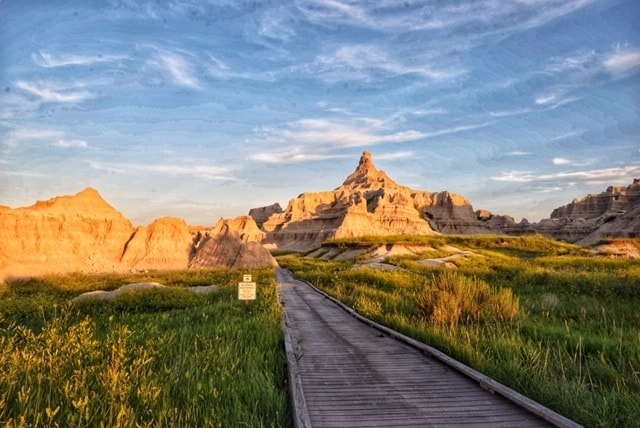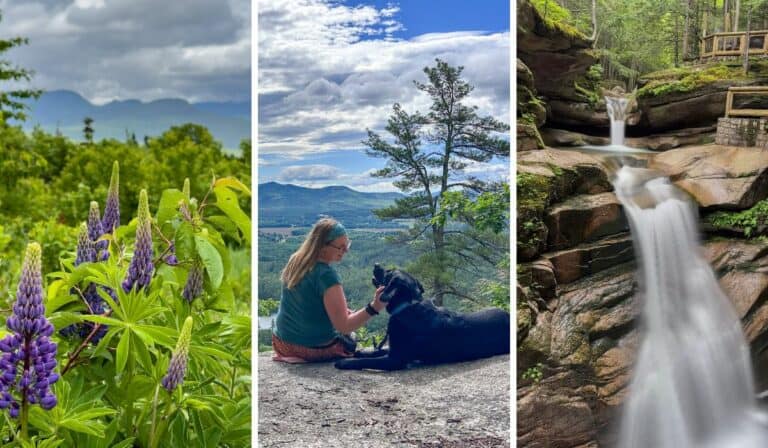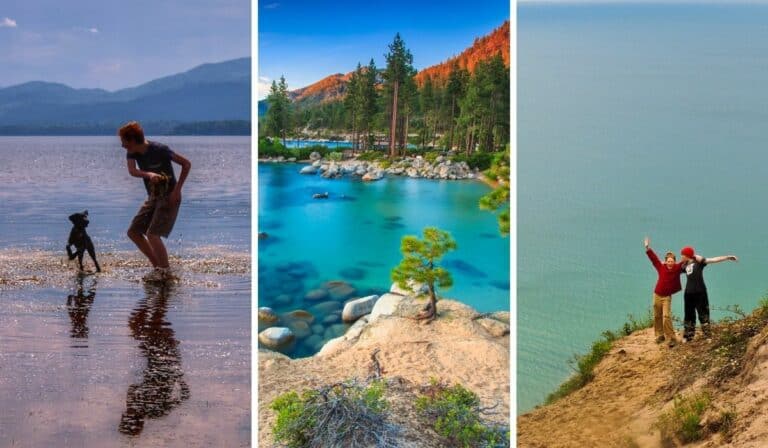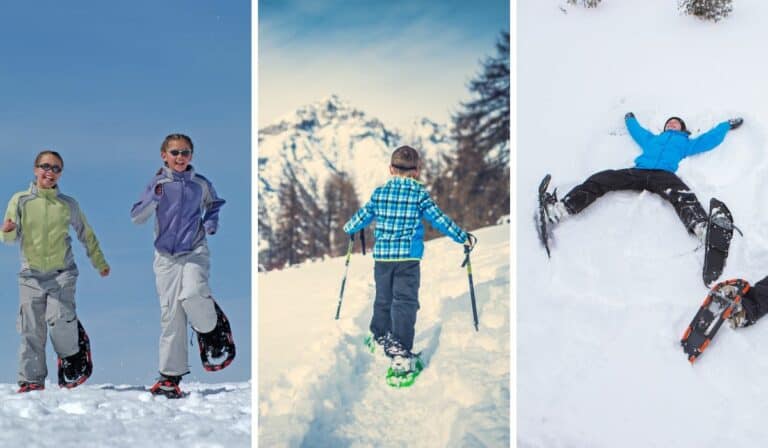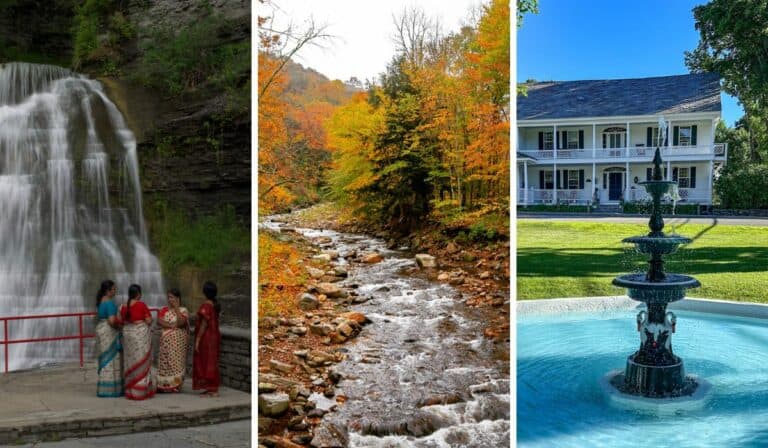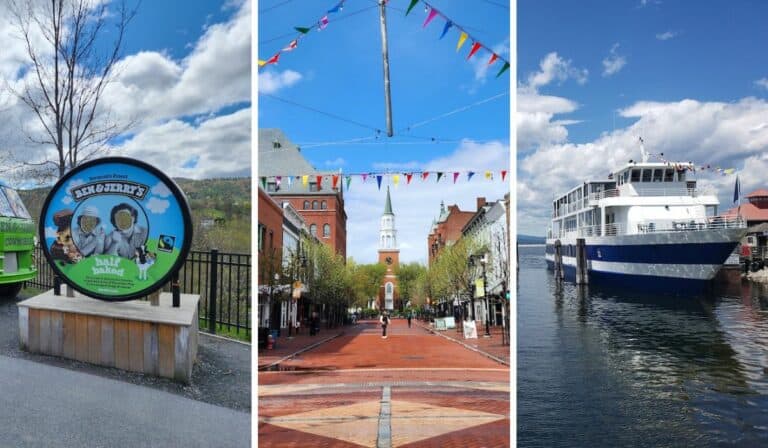25 + Enchanting Things to Do in the Black Hills of South Dakota
Note: Advertising is how we keep this site free for you to enjoy, and we earn a commission from affiliate links that may be included in this post. Thank you for supporting Back Road Ramblers!
Ready for a wild west adventure that will take you through windswept prairies, deep underground, up pine-forested mountains, and around jagged rock formations carved by elements over millions of years?
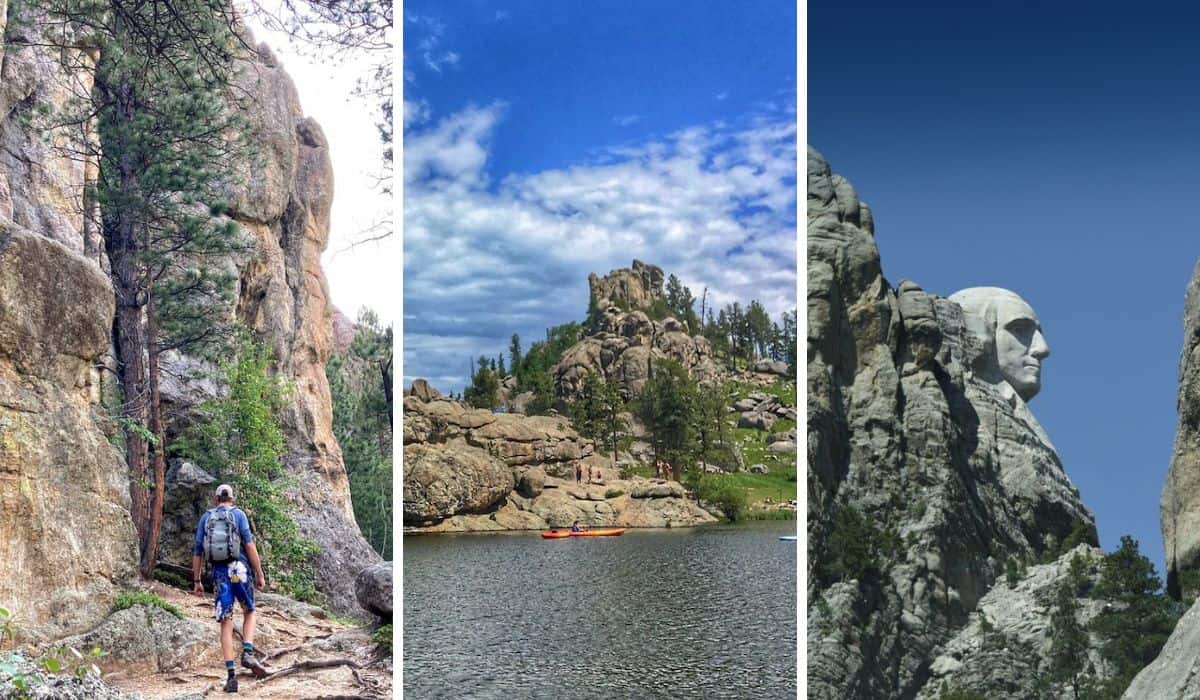
The Black Hill region is most well known for Mount Rushmore, but it’s also got more than its fair share of enticing outdoor adventures, a plethora of wildlife, and jaw-dropping scenery around every bend.
If you haven’t added the Black Hills of South Dakota to your bucket list, I recommend you do that straight away!
To encourage you to start planning your outdoor adventures in the Black Hills, we’ve created a list of some of our favorite things to do in the Black Hills region with a strong emphasis on getting outside.
A Few Things to Note Before Visiting the Black Hills
While the geological and natural history of the Black Hills is fascinating, the human history is fraught with deplorable deeds, including a broken treaty with the Lakota Sioux and a land grab that forced them off their sacred land.
The Black Hills are a place of great beauty —once owned, and still inhabited by the Lakota people. In fact, treaties made between the US government and the Lakota people in 1851 and 1868 ensured that the Black Hills would remain as native territory.
In 1877, the land was confiscated by the United States, an action that was condemned by the US Supreme Court more than a century later.
The Lakota people consider the Black Hills to be sacred and are continuously working to reclaim their land. Outdoor enthusiasts and visitors to the Black Hills region should be aware of this struggle and walk respectfully on the land.
Keep a Respectful Distance from Wildlife
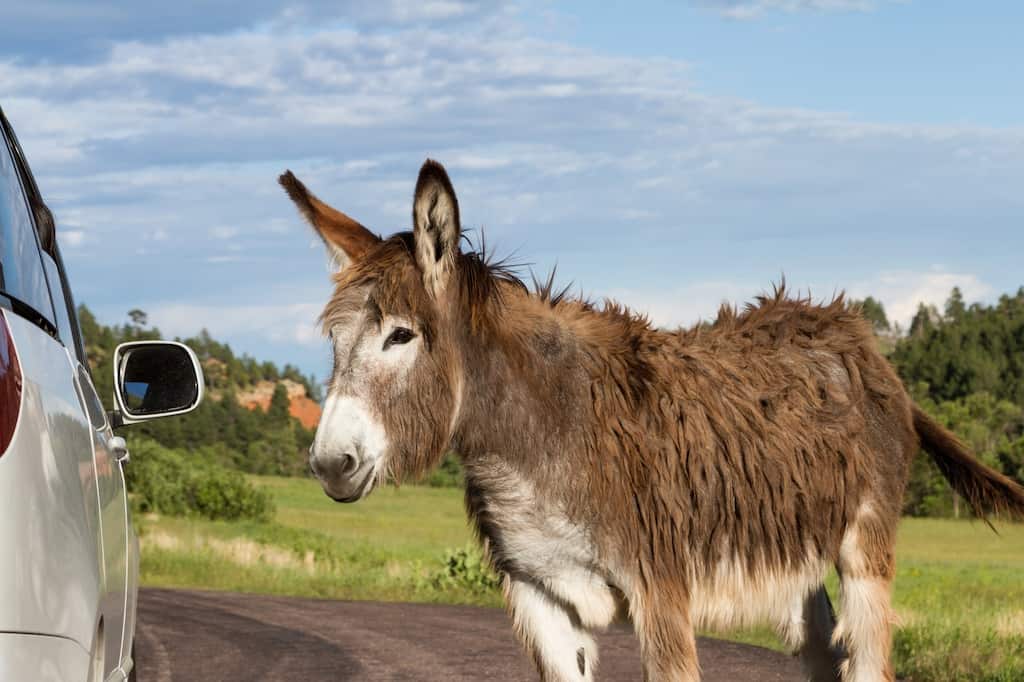
The Black Hills area is home to a great variety of animals, including bison, pronghorn, mule deer, bighorn sheep, coyote, and prairie dogs. Because the wildlife in the Black Hills is so accessible, you may be fooled into thinking you can get closer than you should.
Please, be respectful of wildlife and give them the space they need to remain wild and free — that’s 100 yards for potentially aggressive animals and 25 yards for all other animals.
If a wild animal is reacting to your presence, then you’re too close!
Follow Leave No Trace Guidelines
More than three million tourists visit the Black Hills each year. Do your part to keep this beautiful landscape healthy and vibrant by following Leave No Trace principles.
Stay on designated trails, dispose of your waste properly, and leave natural objects and cultural artifacts where you find them.
Most importantly, plan ahead for any outdoor adventure so that you avoid emergency situations that could easily have been avoided.
Incredible Things to Do in the Black Hills of South Dakota
Time for the good stuff — the best things to do in the Black Hills. This is a massive region that includes more than 8,000 square miles, so when planning your trip, you will either need to stay for a very long time or find a home base in the region you want to explore in depth.
We’ve visited the Black Hills many times over the years, and have made our home base in Custer State Park, Deadwood, and Rapid City. I think we got to cram the most into our visit when we stayed in Custer State Park — Blue Bell Campground if you’re wondering.
We spent A LOT of time in the park, but we were able to see a lot of stuff and do plenty of hiking in five days.
Honestly, you could explore the Black Hills for weeks and not run out of things to do!
Take a Scenic Black Hills Road Trip
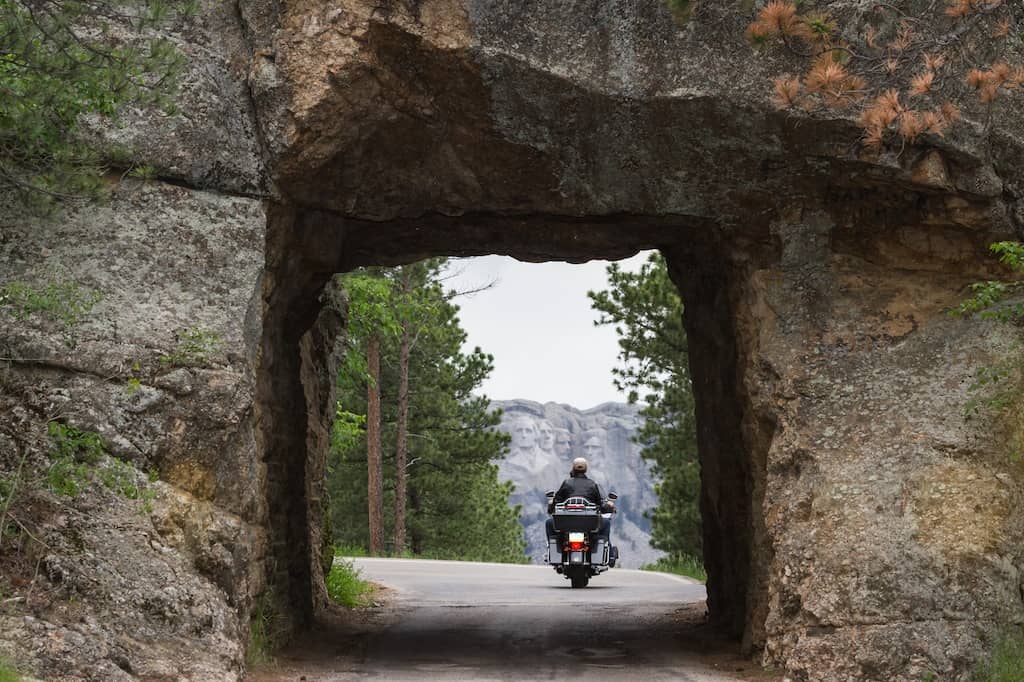
With breathtaking scenery throughout the Black Hills region, you will be hard-pressed to find a road that isn’t incredibly scenic. Custer State Park is a great start for a number of gorgeous road trips, as is the northern Black Hills.
These senic drives allow you to explore more of the Black Hills with lots of chances to spot wildlife, stop for hikes, or find a local attraction that didn’t make it onto this list.
The Needles Highway in Custer State Park
The Needles Highway is a 14-mile portion of Route 87 that winds through Custer State Park. It took us more than an hour to drive the 14 miles as there were lots of tourists and the road is very winding with plenty of spots to pull off and explore. Totally worth going slow and enjoying the ride!
The highlight of the Needles Highway was going through the “eye of the needle,” which is a narrow tunnel just big enough for your car. Actually, it’s more than eight feet wide, but you really do feel like you won’t fit until you do.
We did it in a minivan and it was fine, just a little unnerving. Definitely not suitable for RVs!
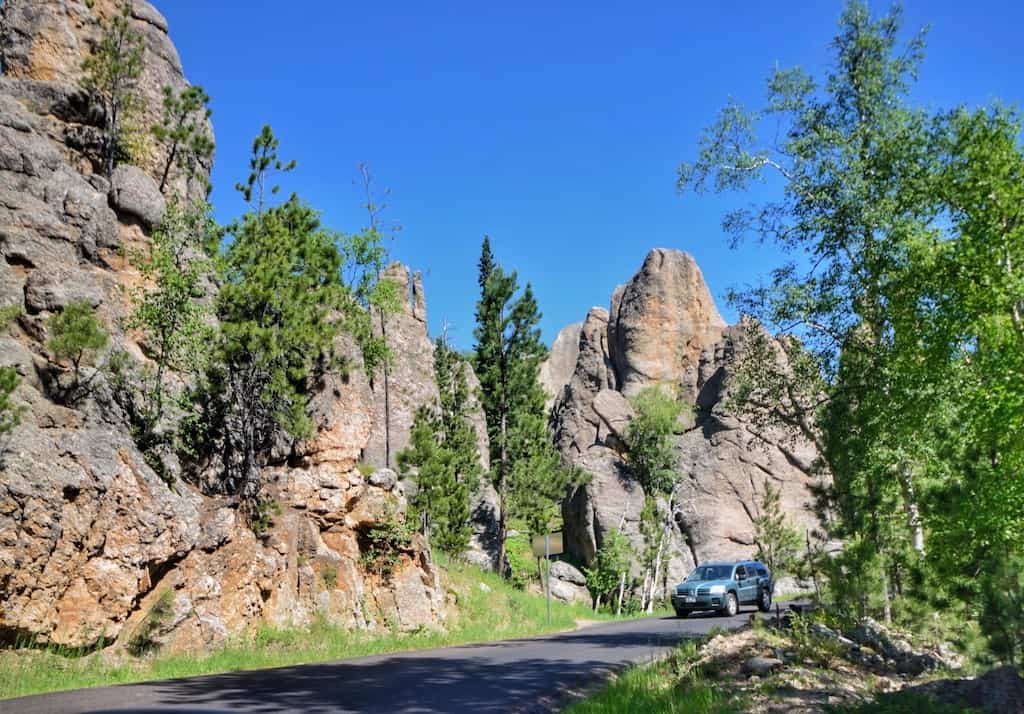
We began our Needles Highway journey at Sylvan Lake, took 87 north to Route 244 east, then drove south back into Custer State Park on Route 16A, also known as the Iron Mountain Road detailed below.
This spectacular loop is collectively known as the Peter Norbeck Scenic Byway and totals 68 miles. The whole road trip took several hours, but it was well worth it!
Iron Mountain Road in Custer State Park
We had heard about the Needles Highway from so many people that we knew we had to do it. Nobody mentioned Iron Mountain Road to us for some reason, but we found it even more thrilling than the Needles Highway.
Iron Mountain Road is a 17-mile stretch of highway known as Route 16A. We drove the road from north to south, which was awesome, but the road was actually designed so that if you drive it from south to north, you pass through several narrow tunnels that frame Mount Rushmore in the distance.
Another cool feature of Iron Mountain Road is the curly “pigtails” in the road that loop and curve over each other.
Like the Needles Highway, you have to drive slow on Iron Mountain Road. There are lots of places to pull off and enjoy the scenery, have a picnic, or go for a hike.
Spearfish Canyon Scenic Byway
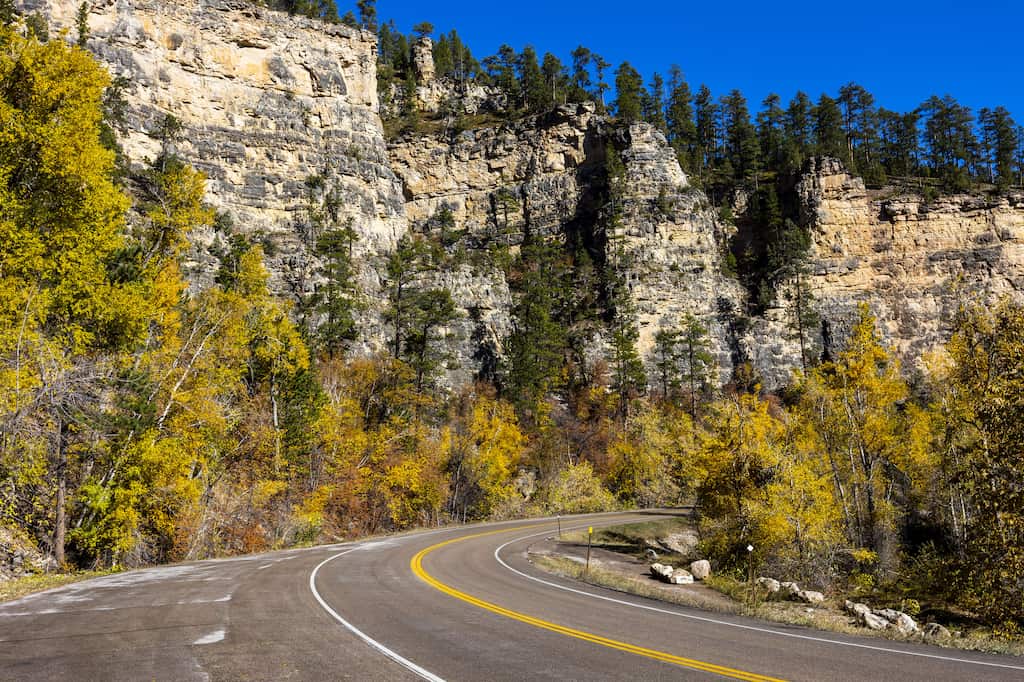
Located in the northern Black Hills, Spearfish Canyon Scenic Byway is an enchanting 22-mile drive into Spearfish Canyon with dizzying limestone cliffs, several gorgeous waterfalls, and scenic overlooks with panoramic views.
The waterfalls were my favorite part of this drive, and I would suggest stopping at all three main falls. Coming from the south, you will hit Roughlock Falls, then Spearfish Falls, then Bridal Veil Falls.
Spearfish Canyon is at least an hour from Custer State Park, so plan to do this drive along with a trip to Deadwood, and spend at least a full day exploring.
Look for Wildlife in Custer State Park and Wind Cave National Park
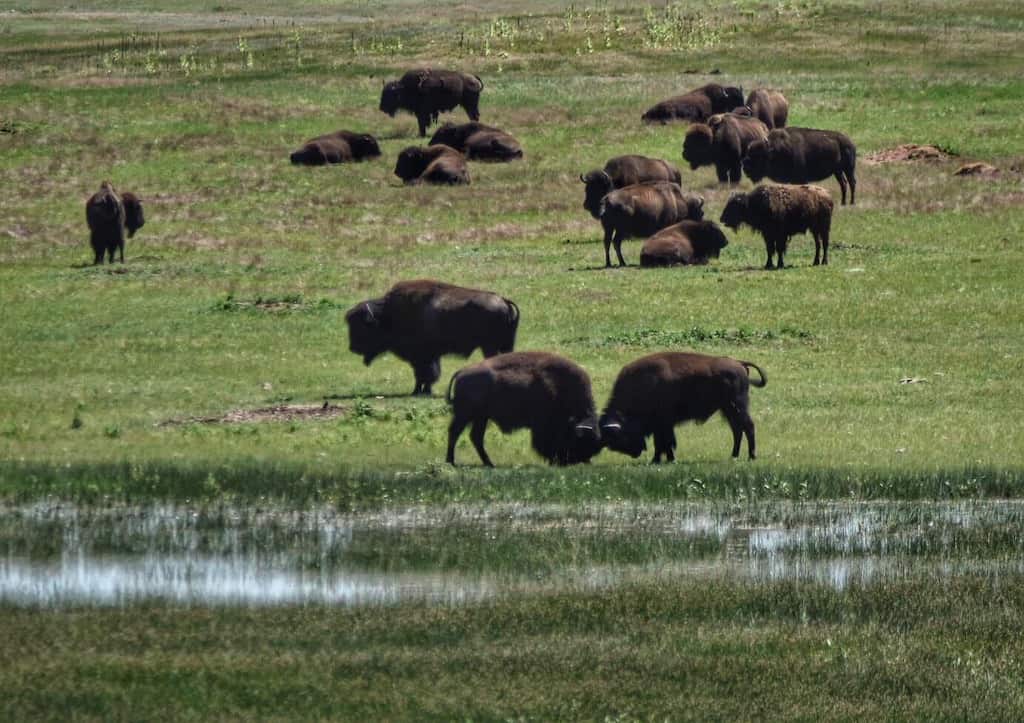
The whole Black Hills region is teeming with wildlife, and the open forests and prairie landscapes make animals easy to spot. I love watching large bison herds, especially in the summer when there are babies. You will almost definitely see bison on Route 87 traveling through Wind Cave National Park or on the Wildlife Loop Road in Custer State Park.
Another favorite on the Wildlife Loop Road is the feral burros. These guys are very used to people, and they tend to hang around looking for handouts.
They’re pretty hard to resist, but please don’t feed them! They are still wild animals, despite what they’d have you believe.
Other animals you’re likely to see on the Wildlife Loop Road are pronghorn antelope, prairie dogs, mule deer, and possibly coyotes. We had the best luck driving the loop at dawn or dusk — fewer people and more animals.
Pitch Your Tent at one of the Custer State Park Campgrounds
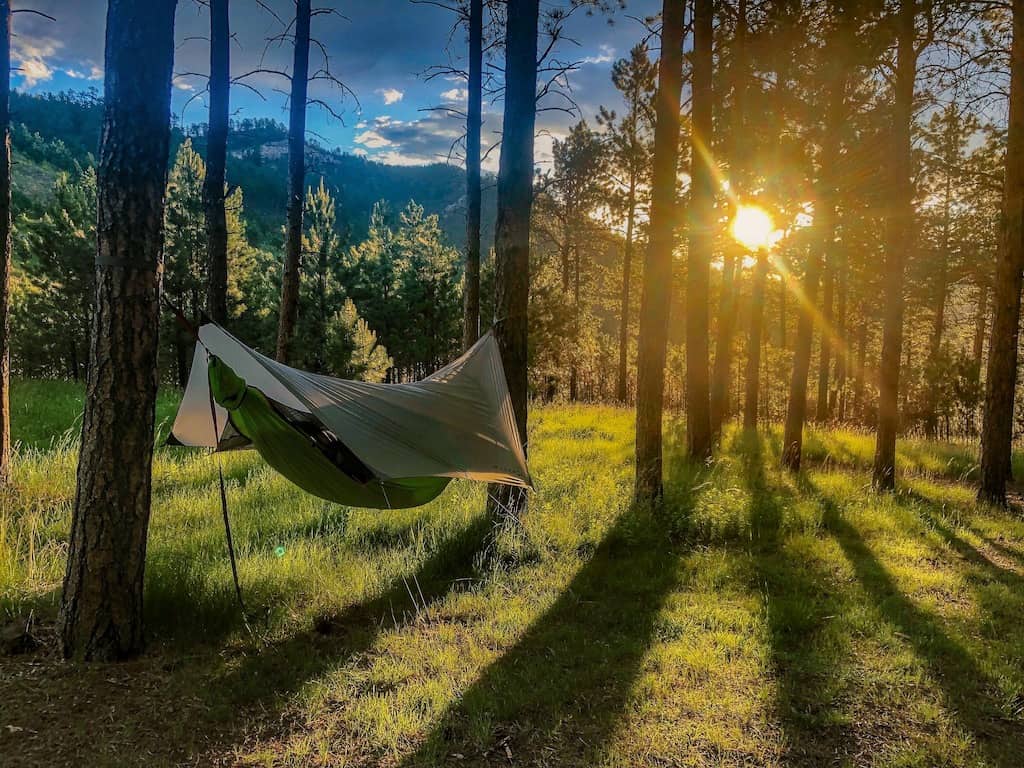
Custer State Park covers more than 71,000 acres, so where you choose to pitch your tent matters!
It’s a popular spot for RVers and tent campers alike, and you can choose from nine campgrounds scattered around the park as well as primitive backcountry camping.
There are pros and cons to each of the Custer State Campgrounds. The lake campgrounds — Legion Lake, Center Lake, Sylvan Lake, and both Stockade Campgrounds can get very busy during the summer.
A few of the campgrounds have RV length restrictions, so be sure to check the Custer State Park website before making a reservation. Cabins are also available in many of the campgrounds for $55 per night.
During our Custer State Park camping trip, we stayed at Blue Bell Campground. We had heard that this was one of the more quiet campgrounds within the park. We made our reservations about a month in advance and crossed our fingers that we’d love it.
The tent-only sites are tucked away in the back with gorgeous views of the hills. There are plenty of trees for hammock camping and platforms for tents. There are only 30 sites at Blue Bell Campground, and everyone was super friendly. Also, the Wi-Fi was decent if that’s something that’s important to you, and there were ranger-led programs in the evenings.
We’d definitely stay at Blue Bell Campground again.
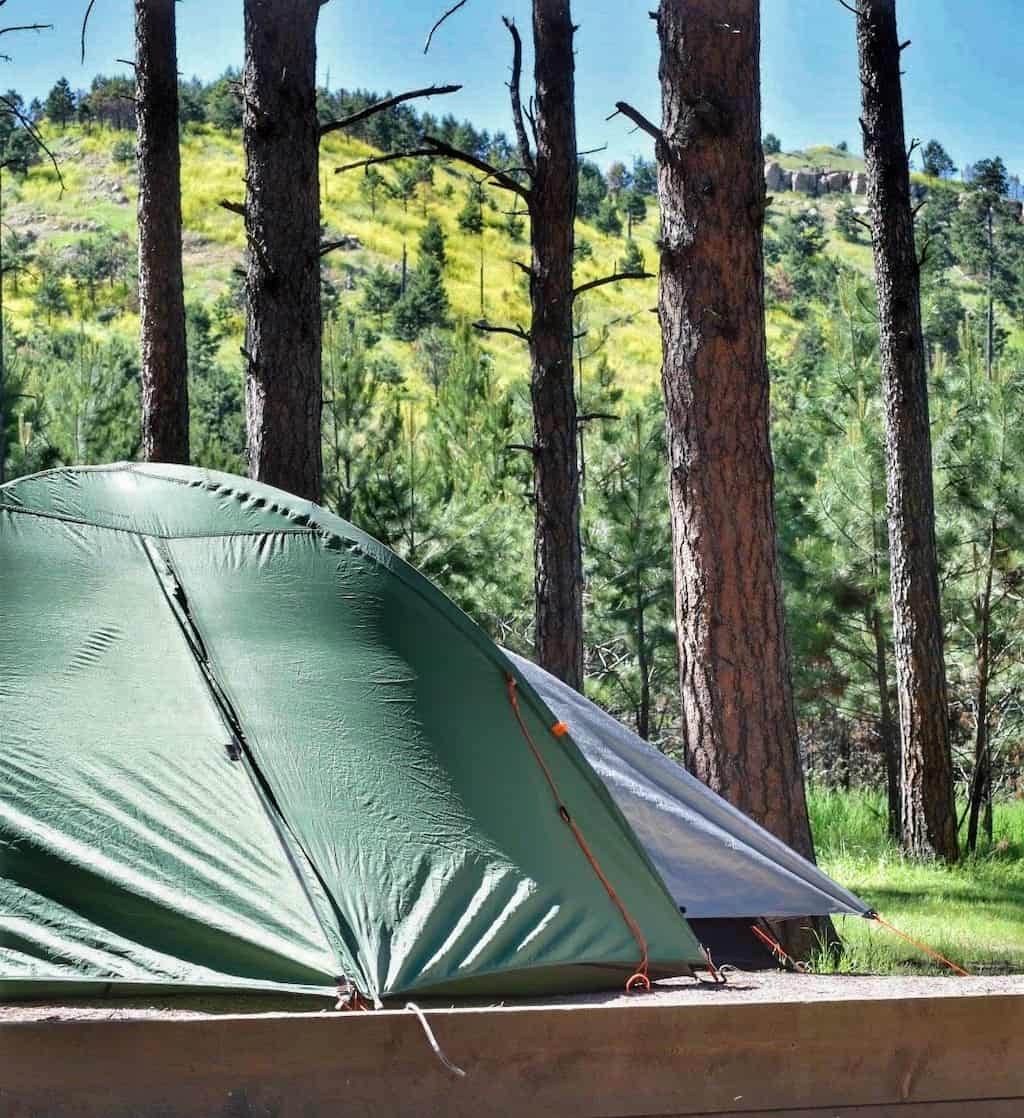
Insider tip: Campsite fees vary from campground to campground and are in addition to the Custer State Park entrance fee of $20 per vehicle, which is good for seven days.
Visit Mount Rushmore National Memorial
We did not visit Mount Rushmore on our most recent trip to the Black Hills, but I had been a few years prior and figured it probably hadn’t changed that much.
Still, Mount Rushmore is the top tourist attraction in the area and definitely one of the best things to do in the Black Hills.
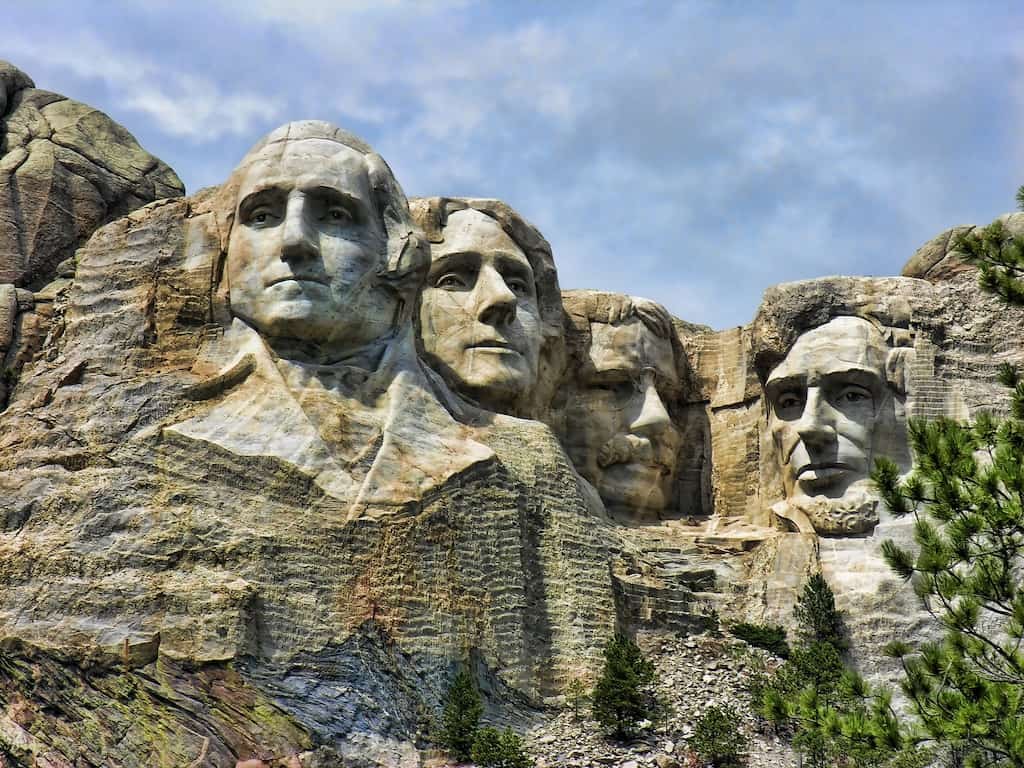
Located in Keystone, South Dakota, this iconic sculpture features the incredibly huge heads of four presidents carved on the side of the mountain.
Do you know which ones? Yup – Washington, Jefferson, Theodore Roosevelt, and Lincoln. They were chosen because of their role in preserving the republic and expanding territory.
Mount Rushmore was completed in 1941 and is currently South Dakota’s number one tourist attraction. It’s an impressive display and worth checking out. Once.
While there, be sure to hike the Presidential Trail, which goes right uder Mount Rushmore with lots of different vantage points. Be prepared to climb lots of stairs (400+) on this 0.9-mile loop, which is closed i the winter.
Rushmore Tramway Adventures
Visiting Mount Rushmore with kids? They’ll love Mount Rushmore Tramway Adventures before or after seeing the monument. With a relaxing gondola ride, an alpine slide, ziplines, and an aerial adventure course, there are worse ways to spend an afternoon!
This top tour attraction opened in 1965 and has been drawing crowds ever since. Open 9:30 am to 5:00 pm.
Go Caving at Wind Cave National Park or Jewel Cave National Monument
Underground wonders abound in the Black Hills, but Wind Cave and Jewel Cave are the most expansive and well-known caverns to explore.
Both caves are maintained by the National Park Service and open to visitors for ranger-led tours.
Jewel Cave National Monument is the third-largest cave system in the world, with more than 200 miles of plotted passageways beneath the surface.
Wind Cave National Park’s caverns are still being discovered, but so far, more than 150 miles of passageways have been documented.
Should You Visit Jewel Cave or Wind Cave (or Both)?
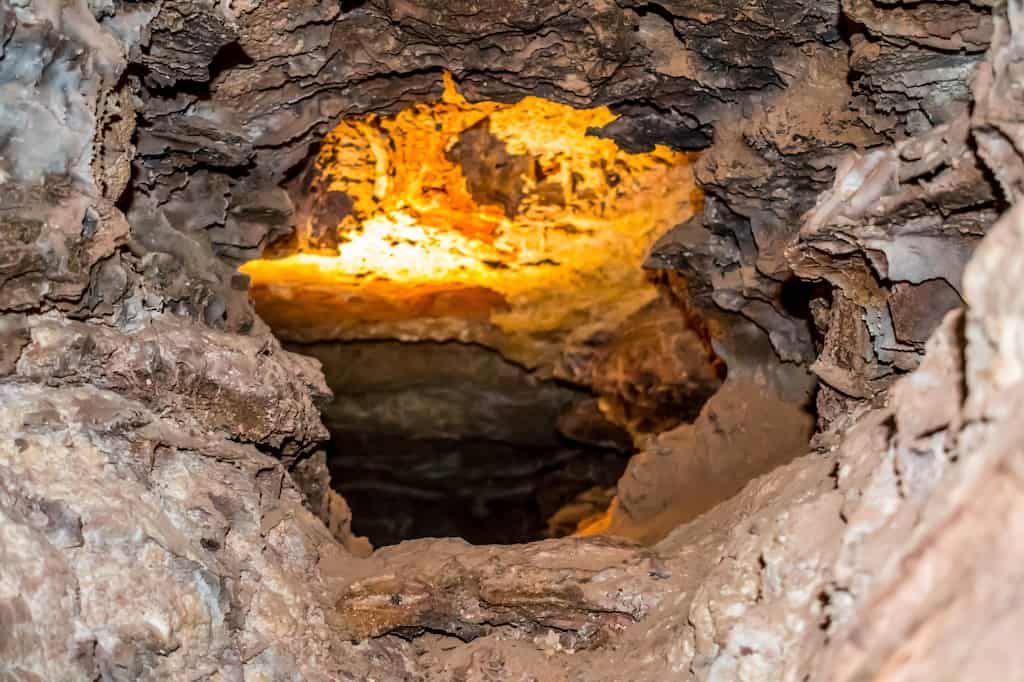
If exploring caves is your thing, visit them both!
Jewel Cave is lined with spar crystals — beautiful formations made of calcite that sparkle in the light, plus a variety of impressive rock formations. The tours through Jewel Cave are moderately strenuous with a whole lot of stair climbing. There’s also a small network of nature trails above Jewel Cave.
Wind Cave is one of the only caves in the world to feature boxwork formations, which resemble honeycombs made of thin blades of calcite.
Guided tours of various lengths are available, but all of them require some amount of stair climbing. The easiest tour, the Garden of Eden Tour, is ⅓ of a mile with 150 stairs.
Wind Cave National Park includes an extensive prairie ecosystem above ground with lots of trails to explore, plus a campground.
I think that Wind Cave National Park offers a more varied wilderness experience, but don’t pass up Jewel Cave if you love being underground.
Paddle one of the Amazing Lakes, Rivers, or Reservoirs in the Black Hills
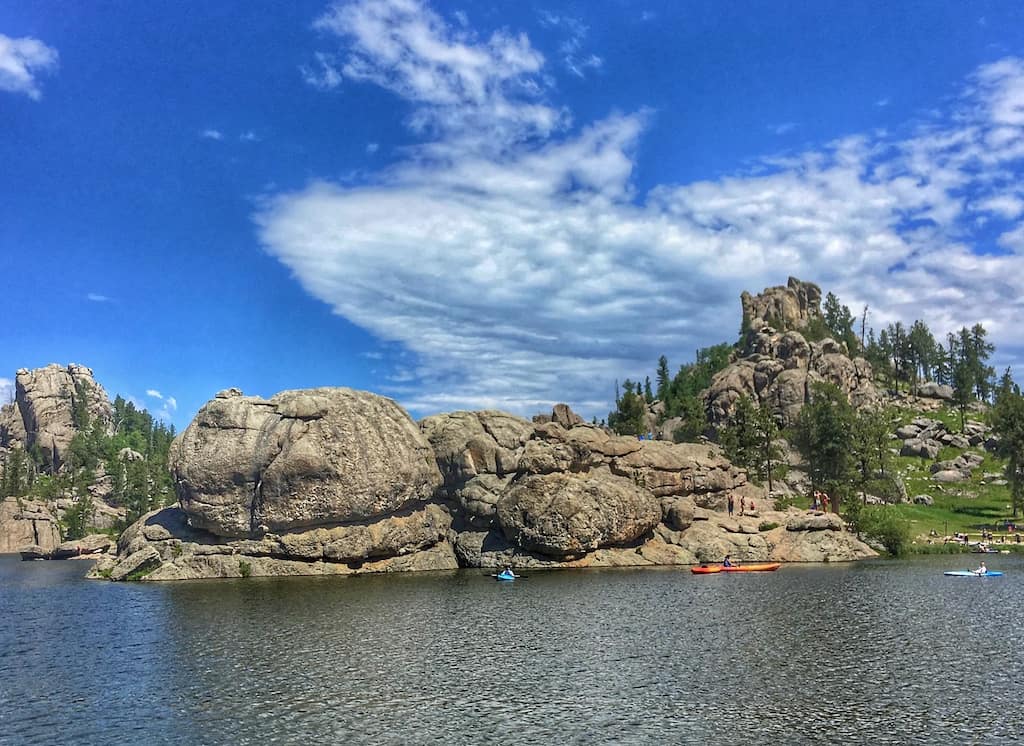
There are tons of options for getting out on the water in the Black Hills.
We often make our home base in Custer State Park, which allows paddling on four of the five lakes within its borders.
We’ve heard that the rivers in the Black Hills are fabulous for paddling as well, but we haven’t had a chance to do that yet.
Here are our top choices for canoeing, SUPing, and kayaking in Custer State Park. We hear the fishing is great too!
Sylvan Lake in Custer State Park – This is the largest and most picturesque lake in Custer State Park. It’s also the most popular. At Sylvan Lake, you’ll find a fully stocked store, a full-service lodge, non-motorized boat rentals, and a sandy swimming beach. To avoid crowds and find a parking spot, we recommend showing up before noon.
Legion Lake in Custer State Park – Legion Lake is a bit smaller and a bit less crowded than Sylvan Lake, and it doesn’t have as many dramatic rock formations, but it’s still incredibly picturesque.
When we visited, the rangers were offering free canoe rentals so we jumped at the chance to get out on the water. There is a lodge and restaurant on the shore, a nice trail around the lake, and a sandy beach for swimming.
Stockade Lake in Custer State Park – This is the largest lake in Custer State Park with two campgrounds, a sandy beach, and hiking trails. Of all the Custer State Park lakes, Stockade Lake is the only one that allows motorboats.
Explore Black Hills National Forest
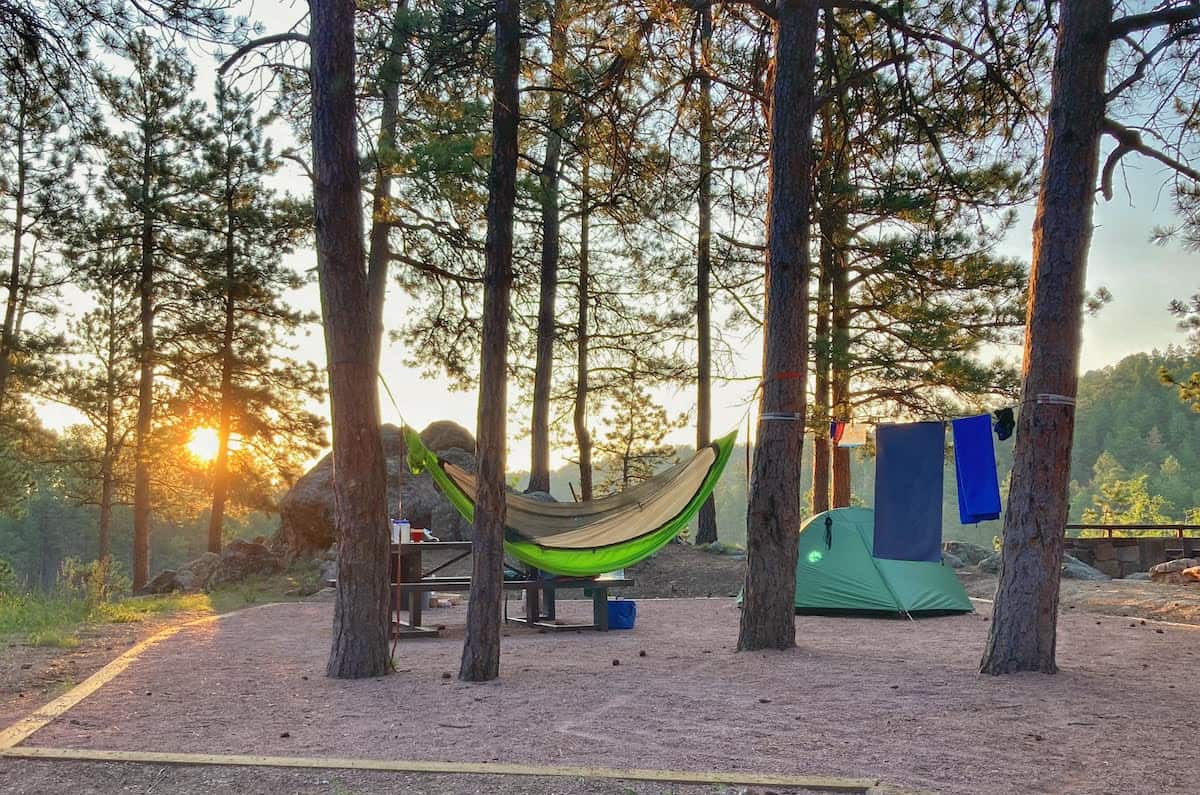
The massive Black Hills National Forest includes 11 reservoirs, 30 campgrounds, 26 picnic areas, 2 scenic byways, 1,300 miles of streams, 13,000 acres of wilderness, an 353 miles of trails!
It can be overwhelming trying to decide where to go and what to do. The campgrounds in the national forest offer a more primitive experience than Custer State Park, and many are close to great swimming and hiking too.
Last year, we stayed at Horsethief Lake Campground near Mount Rushmore, and found a few great hikes right near the campground. We were also able to cool off in the lake every morning and evening, which was fabulous (this is a great campground for kids).
Go Horseback Riding in Black Hills National Forest
There are lots of great trails for horses and riders in Black Hills National Forest, making it a very popular activity for visitors and locals.
Sage Meadow Ranch is situated on acres of prairie, pines, and rolling hills. Located near the scenic and historic Red Canyon, they offer personalized trail rides
The Stables at Palmer Gulch in Hill City, South Dakota takes riders into Norbeck Wildlife Preserve as well as customized tours within Black Hills National Forest.
Rockin R Rides, based outside of Custer, South Dakota, offers a variety of trail rides (from 1.5 to 3 hours) through Black Hills National Forest.
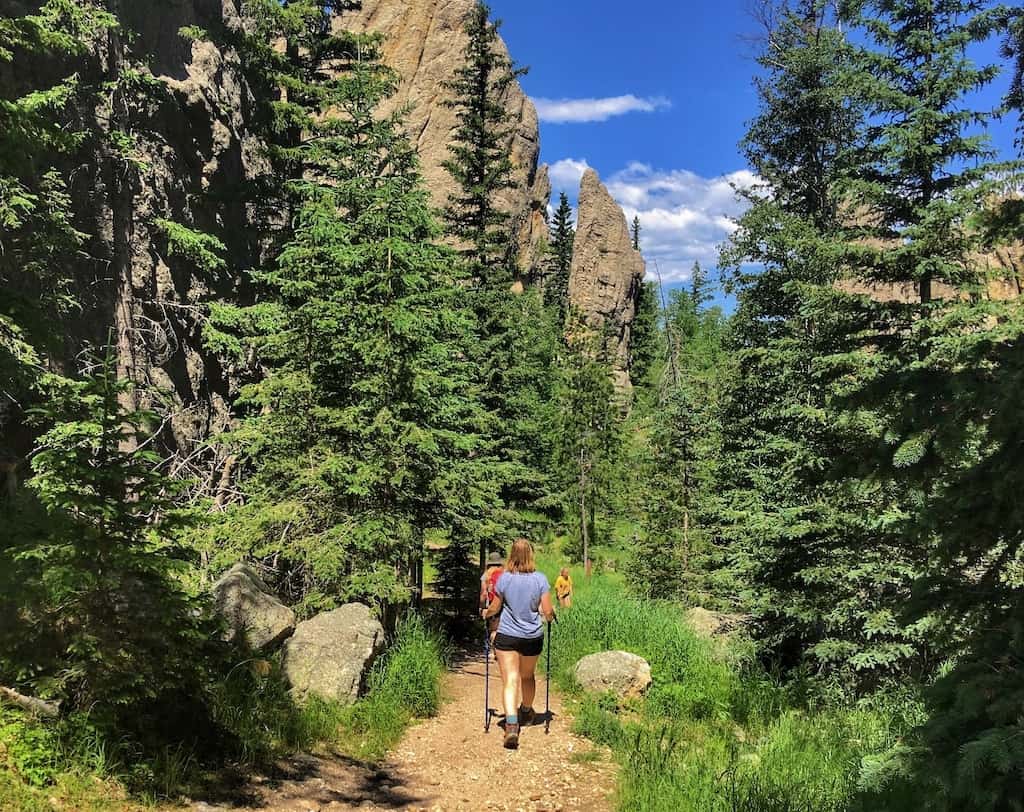
You could hike every day for a year in the Black Hills and not hit the same trail twice!
In Custer State Park, check out the following trails:
Sunday Gulch Trail (near Sylvan Lake): The Sunday Gulch Trail is rated as strenuous, but really only the beginning (or end depending on which way you hike) of the three-mile hike is hard, with a series of steep staircases and creek crossings.
We hiked clockwise from the Sylvan Lake trail and found Sunday Gulch Trail to be beautiful, quiet, and extremely rewarding. Yes, the last quarter mile was tough but so worth it. I highly recommend Sunday Gulch Trail if you’re staying in Custer State Park.
Cathedral Spires Trail: Cathedral Spires starts off the Needles Highway and is a dramatic journey into the crazy rock formations of the Black Hills. It’s an out-and-back trail that totals 1.6 miles, and you will share it with lots of other visitors. You’ll likely see a bunch of rock climbers as well.
Black Elk Peak: At 7,250 feet, Black Elk Peak is the highest peak in South Dakota and the highest peak east of the Rocky Mountains. There are a lot of different ways to hike to the top, and you can actually combine a hike to Black Elk Peak with a hike to Cathedral Spires and Little Devil’s Tower.
If you start at Cathedral Spires Trailhead, hike into the spires and then turn left on Black Elk Peak Trail #4 to visit Little Devil’s Tower. From there, turn around and hike in the opposite direction on Black Elk Peak Trail until you reach the summit.
Earth Trekkers has a great overview of this exact trail, which is probably our favorite hike in Custer State Park.
In addition to all the hiking in Custer State Park, there are also lovely trails in Wind Cave National Park, Black Hills National Forest, Bear Butte State Park, and Thunder Basin National Grassland.
The Black Hills really is a hiker’s paradise and we can’t wait to go back and explore more!
Visit Crazy Horse Memorial
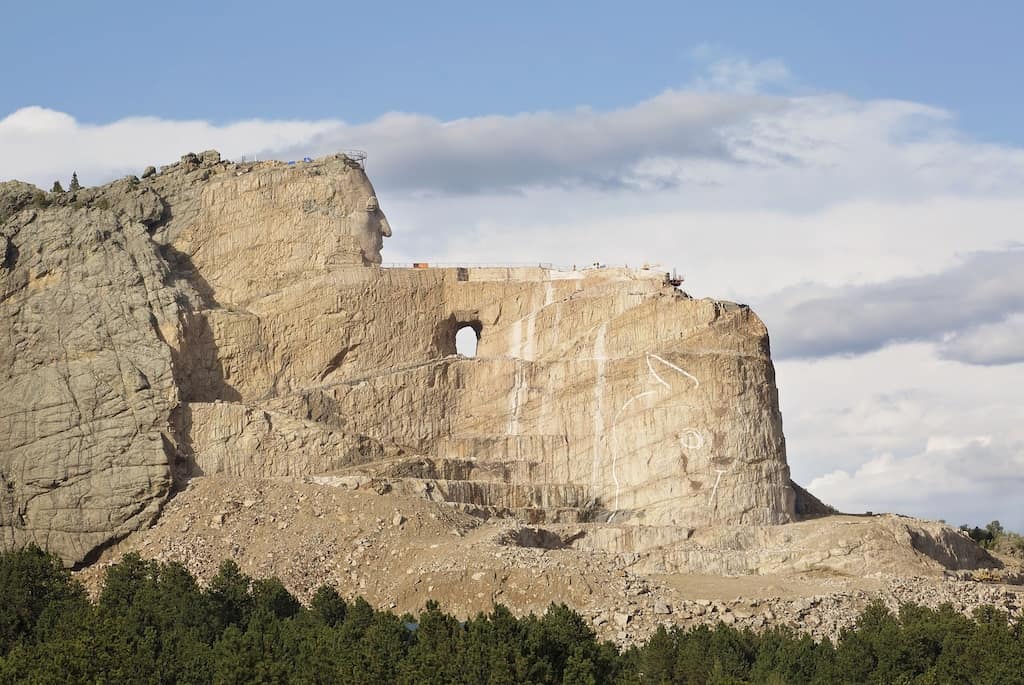
While the Crazy Horse Memorial is far from finished, it is still an amazing work of art that is worth checking out, and one of the coolest things to do in the Black Hills.
When finished, the sculpture’s final dimensions will be 641 feet long and 543 feet tall. The Crazy Horse sculpture was started in 1948 to memorialize the Lakota warrior, Crazy Horse, who is best known for taking up arms against the US government for encroaching on tribal land.
Today, you can visit the in-progress memorial, which is owned and operated by the Crazy Horse Memorial Foundation.
The Indian Museum of North America is located on-site and tells of the history of the memorial while honoring the living heritage of North American Indians.
The whole complex can be explored in an afternoon and is super impressive! The Crazy Horse Memorial is located off of scenic Route 385, which is another gorgeous road not far from Mount Rushmore and Custer State Park.
Tours will take you to the bottom of Thunderhead Mountain, which is the base of the statue. You can pay an extra fee to go to the top of the mountain, where you will be face-to-face with the colossal Lakota warrior.
Because the Crazy Horse Memorial Foundation does not rely on government funding, every dollar raised is integral to helping them complete the memorial.
Visit Hot Springs, South Dakota
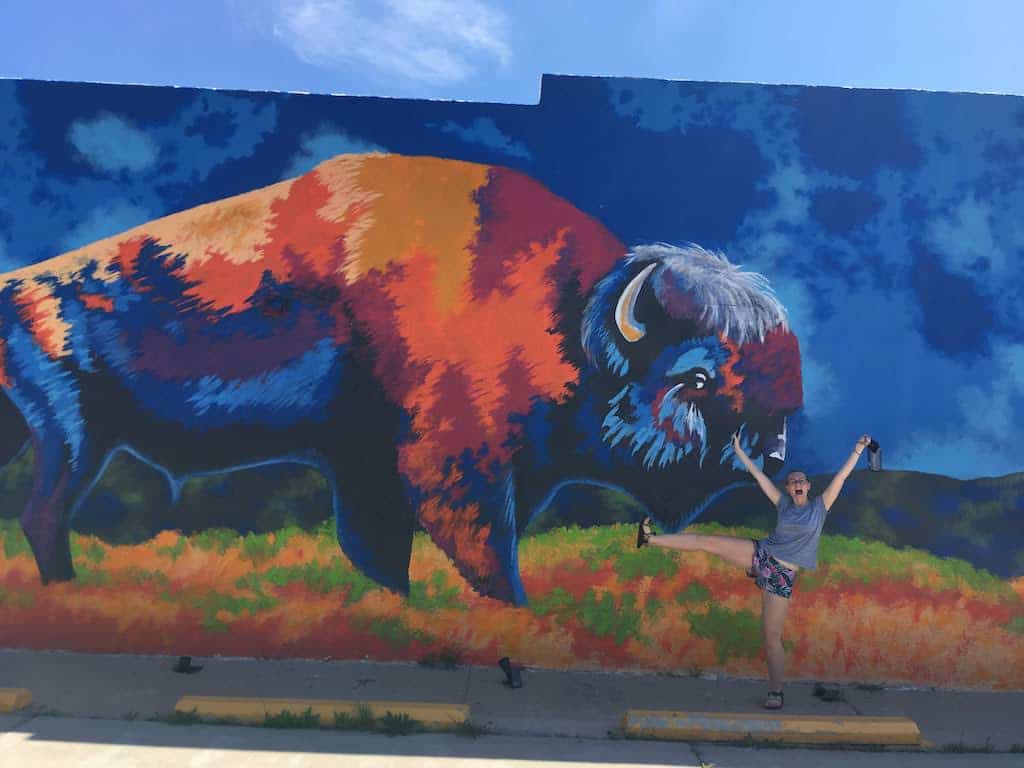
Hot Springs is located just south of Wind Cave National Park and makes a great home base for exploring the southern Black Hills, especially if you want to be close to shopping, restaurants, and hotels. It’s far less touristy than Keystone (near Mount Rushmore), but there’s still a lot to do there.
Spend a couple of hours exploring downtown Hot Springs, and put these things on your list too!
- The Mammoth Site: Check out the world’s largest mammoth research facility. View Ice Age fossils, tour an active dig site, and take a self-guided tour.
- Soak in a Hot Spring: You can’t visit Hot Springs without soaking in a hot spring. The springs are actually ‘warm springs’ averaging 80+ degrees. Evan’s Plunge is a popular tourist attraction that includes hot tubs, indoor and outdoor pools, and several water slides.
- Pioneer Museum: Step back in time at the Pioneer Museum, where you can see what life was like on the plains 100+ years ago. Explore 25 exhibit areas with old tools, original artwork, toys, music, and more.
Visit Rapid City, South Dakota
If you’re seeking a more urban adventure while in the Black Hills, be sure to spend some time in Rapid City (population 76,000+), sometimes called the “City of Presidents” thanks to the life-sized bronze statues of all of the nation’s presidents.
Rapid City is a vibrant town with lots of galleries, museums, restaurants, and shopping. The Black Hills Powwow is one of the largest powwows in the nation and its held in Rapid City every October.
Here are a few more awesome things to do in Rapid City SD:
- Tour the Reptile Gardens: Not for everyone, but this combination zoo and botanical garden is worth exploring. The Sky Dome is one of the most recognized buildings in South Dakota, and inside you’ll find a tropical oasis full of gorgeous plants and critters. You can also see a prairie dog town, meet a bald eagle, and mingle with giant tortoises.
- The Journey Museum & Learning Center: Along with Black Hills history and Native American culture, The Journey Museum & Learning Center is also home to the vast collection that shows humanity’s journey through time, from creation all the way through current life.
- Chapel in the Hills: Chapel in the Hills is an exact replica of the famous Borgund Stavkirke in Norway. Built in 1969, it’s surrounded by a peaceful wilderness in Rapid City, and offers a museum, gift shop, and meditation trail. When the chapel is closed, you can tour the grounds and admire the architecture.
Visit Deadwood, South Dakota
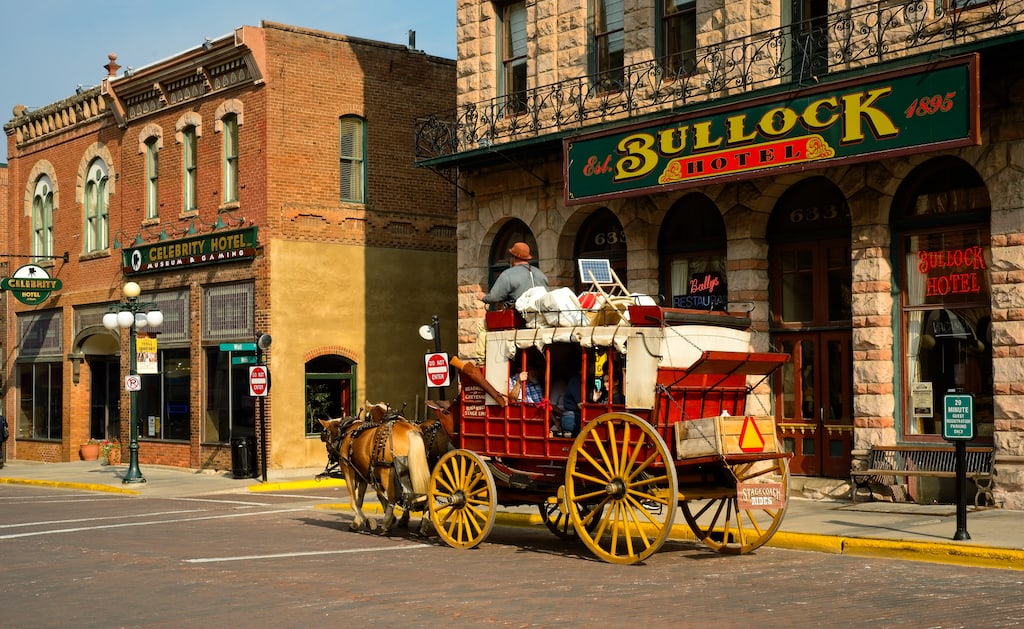
Historic Deadwood embraces the Wild West and brings it alive. Yes, it’s super touristy, but it’s a fun place to visit, and kids love it!
The town grew up quickly after gold was discovered in 1876. This rambunctious, lawless town attracted outlaws, gamblers, and gunslingers along with the gold seekers. Wild Bill Hickok, Calamity Jane, and Seth Bullock all roamed these streets (and helped put tiny Deadwood on the map).
Today, Deadwood Alive reenacts the major historic events – like the Trial of Jack McCall and Wild Bill’s assassination— that inspired the legends you know today. Free shows happen every day in the summer, along with lots of family-friendly events.
Here are a few more things to do in Deadwood SD:
- Gamble: There are several casinos in and around Deadwood. See the world’s largest slot machine at Bodega Casino or visit the 24-hour gaming floor at Cadillac Jack’s.
- Take a stagecoach ride iwth Deadwood Alive: Not only do they put on one of the longest-running theatrical productions in the US, but Deadwood Alive also offers fantastic stagecoach tours down Main Street.
- Tour Mount Moriah Cemetery: Deadwood’s historic cemetery includes such notables as Wild Bill Hickok and Calamity Jane. Take a self-guided tour where you’ll learn about some of Deadwood’s most interesting characters.
Practical Tips for Visiting the Black Hills of South Dakota
- Getting to the Black Hills – The Black Hills of South Dakota is conveniently located for car travel, right off of I-90. The nearest metropolitan area is Rapid City, South Dakota and the nearest airport is Rapid City Regional Airport, with direct flights from Las Vegas, Phoenix, Chicago, Dallas, Denver, and Minneapolis.
- Getting around – We visited the Black Hills during a cross-country road trip, so we were able to use our car to explore all of the awesome Black Hills attractions, hikes, and parks. The Black Hills is such a vast area to explore that public transportation isn’t really a viable option.
- The best time to visit the Black Hills – If you’re camping, the best time to visit the Black Hills is during the summer months, with May and June being great times to see baby bison. The annual Custer State Park Buffalo Roundup and Arts Festival takes place at the end of September.
Follow us on social media!
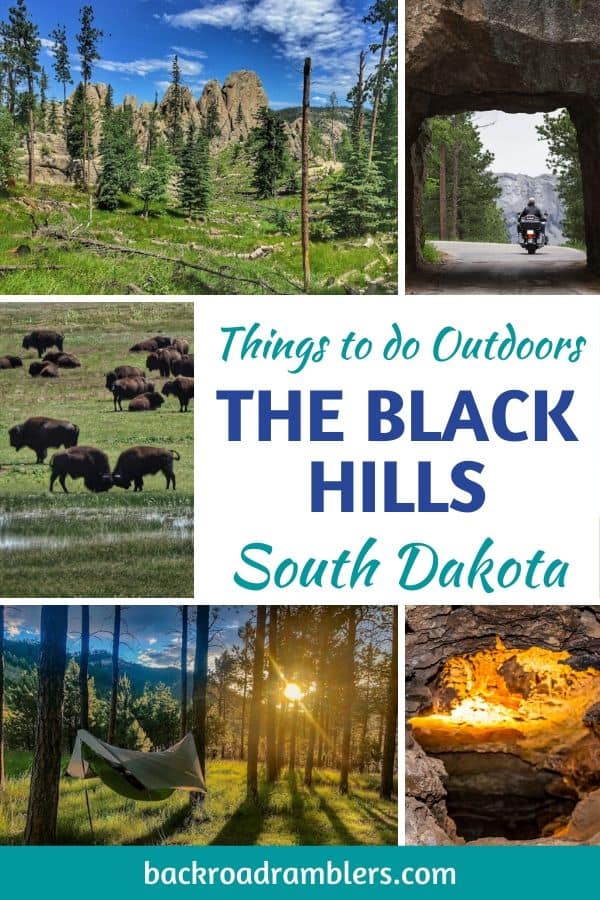

Tara Schatz is a freelance writer and travel blogger with a passion for outdoor adventures. She is the co-author of AMC’s Best Day Hikes in Vermont and currently blogs at Back Road Ramblers and Vermont Explored, where she shares travel tips, adventure destinations, and vacation ideas for the wanderer in everyone.

